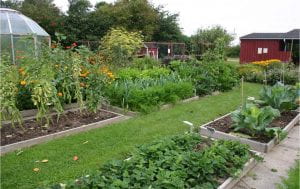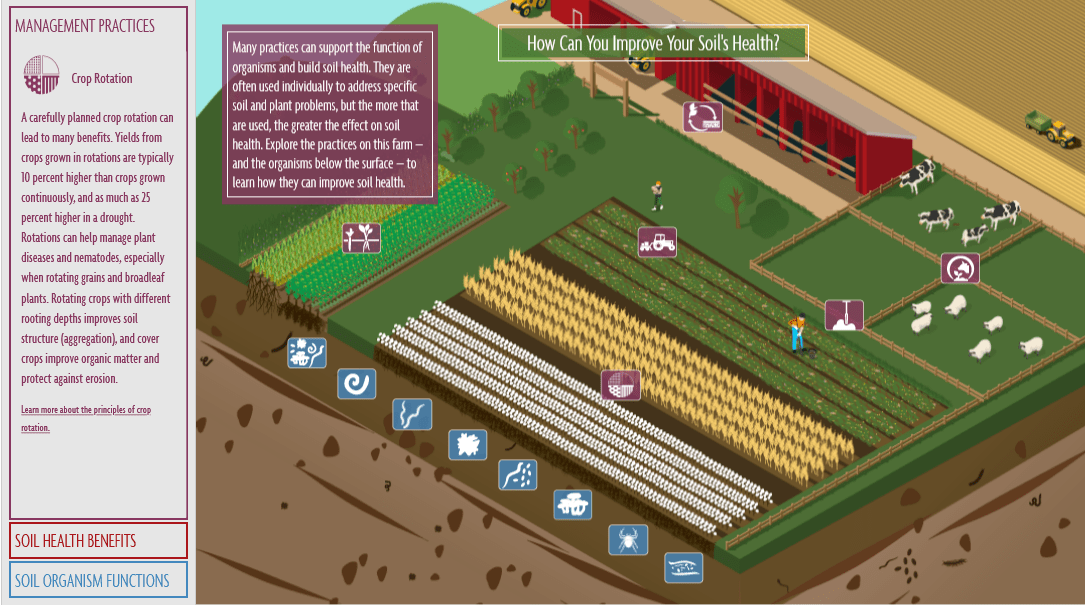by Joan Kean, Pine Bush Master Gardener Volunteer
This article appeared in the April 2021 Issue of Gardening in Orange County.
 Crop rotation is the planned, successive cultivation of different crops in a specified order on the same land over time. Regardless of whether you have acres of farmland, grow vegetables in containers, or anything in between, crop rotation is an important concept to integrate into your growing strategies. It is a system of cycling a parcel of land through various crops in order to reduce the reliance on chemical fertilizers, pesticides, and herbicides. It is vitally important to optimal soil health and can increase yields.
Crop rotation is the planned, successive cultivation of different crops in a specified order on the same land over time. Regardless of whether you have acres of farmland, grow vegetables in containers, or anything in between, crop rotation is an important concept to integrate into your growing strategies. It is a system of cycling a parcel of land through various crops in order to reduce the reliance on chemical fertilizers, pesticides, and herbicides. It is vitally important to optimal soil health and can increase yields.
The history of crop rotation dates back thousands of years. The ancient Romans spread their farming practices throughout the Roman Empire. European farmers followed a Roman cropping system called “food, feed, and fallow.” Farmers divided their land into three sections. Each year they planted a food grain such as wheat on one section, feed for livestock such as barley or oats on second section and let the third section lie fallow. By following this schedule on a rotating basis, when each section lay fallow it recovered some of its nutrients and organic matter.
Today’s crop rotation systems are science based and range from simple to complex. The succession of crops to be grown is carefully designed to ensure soil nutrients are sustained, pest populations are controlled, weeds are suppressed, and soil health is built. Each crop uses different types and amounts of minerals from the soil. If the same crop is planted each year, over time the soil is depleted of the minerals essential for plant growth and health. In reverse, a different crop will sometimes return missing minerals to the soil as the plant dies and composts or is turned into the soil.
Benefits of Crop Rotation
-
-
- Enhanced soil structure: Rotation preserves and improves soil structure. Grow crops with different root structures that grow to various depths. By rotating, the soil is not submitted to just shallow depth crops, but deep-rooted plants that will slowly deepen the topsoil, enhance water absorption and minimize runoff.
-
- Reduced fertilizer needs: Nitrogen-fixing legumes in crop rotations or used as cover crops fix atmospheric nitrogen into the soil through root nodules. This nitrogen is then available for subsequent crops. Deep-rooted cover crops can draw up nutrients such as potassium and phosphorus from deep in the soil profile, making these nutrients available for subsequent shallow rooted crops. These and other strategies reduce the need for fertilizer and can reduce the production of greenhouse gases.
-
- Reduced pesticide needs: Insects can over winter in your soil. They enter the leaves and vines of your plants ready to reawaken in the spring to find their favorite meal. When you utilize crop rotation, these insects are faced with a plant they don’t feed on.
-
- Disease prevention: Crops that are from the same family tend to have similar disease and insect problems. Just like insects, plant diseases can over winter in plant leaves, roots and vines under your soil. Rotating crops helps to guard against these diseases returning the following year.
-
- Weed control: Including cover crops into crop rotation systems provides greater competitions to the weeds for their basic needs such as nutrients, space and light. Cover crops ultimately crowd out the weeds, slowing down weed growth and proliferation for a reduced weed population in subsequent crops.
-
- Erosion control: Improved soil structure and reduced exposure to water and wind. Cover crops are effective in reducing raindrop impact, reducing sediment detachment and transport, slowing surface runoff, and so reducing soil loss.
-
- Improved soil biodiversity: Crop rotation changes crop residues and rooting patterns. Different crops benefit different species, and so a range of crops will lead to a more diverse and healthy soil microbial community.
-

-
How to Rotate Crops
Crop rotation plans range from simple to complex. Ideally crops should be rotated on a three or four year cycle in a planned sequence. Many rotation schemes involve keeping plants of the same family together throughout the rotation. Plant your solanaceous crops (i.e. tomatoes, peppers, potatoes, eggplant) in one area, cucurbits (i.e. cucumbers, melon, squash) in another, and brassicas (i.e. cabbage, broccoli, etc.) in another. The following year you keep the groups the same, but move their location in the garden.
As you explore crop rotation there are lots of tricks to learn. You can add cover crops to your rotation, which are grown between crops and can be used to protect soil, break-up hard pan, increase organic matter, add nitrogen and/or improve soil aggregation. Consider planting nitrogen-fixing legumes (i.e. peas, beans) before heavy feeding crops (i.e. corn). Potatoes yield best after corn, brassicas do well following onions. Some preceding crops (i.e. peas, oats, barley) increase the incidence of scab on potatoes. Beans are not greatly influenced by the preceding crop. Start by keeping a list or diagram of plant locations in this year’s garden and use it to help you plan how to incorporate crop rotation into your vegetable gardening strategy.
Resources
History & Principles of Crop Rotation – Allotment Garden
Learn more about the importance of crop rotation and see examples of three, four and five year crop rotation plans specifically developed for gardeners.
Cover Crops for Home Gardeners – Oregon State University
Crop Rotation on Organic Farms – Sustainable Agriculture
Research and Education – USDA
Although written for farmers, this manual has a plethora of information relevant to gardeners including sample crop rotation sequences.
What is Soil Health? – Sustainable Agriculture
Research and Education – USDA
An interactive exploration of soil health and how to improve it.
